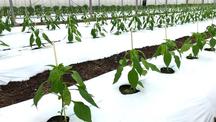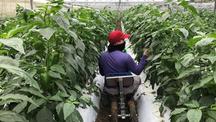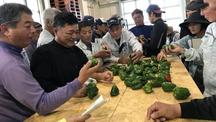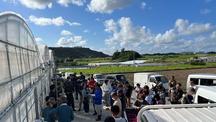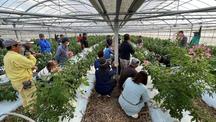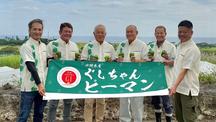Gushichan Piman
| Registration Number | 140 |
|---|---|
| Name of the GI | Gushichan Piman, Gushichan Piment |
| Class | Vegetables/ Cereal grains/Pulses |
| Date of Protection | 2024/01/29 |
| Producing Area |
Okinawa Prefecture
Yaese Town, Shimajiri County |
| Applicant - Name and Address | JA Okinawa 2-9-1 Tsubogawa, Naha City, Okinawa Prefecture |
"Gushichan Piman" is a big-size bell pepper with a thick pericarp, shiny skin, apple-resembling sweetness, and crunchy texture.
Consumers highly recognize it as not being bitter and good to eat, even fresh.
For producing "Gushichan Piman", the variety recommended by JA Okinawa is used.
The peppers are cultivated by referring to the Okinawa Prefectural government's "Okinawaken Yasai Saibai Youryou", which states appropriate temperature control, fertilizer management, etc., and shipped based on fruit sorting standards specified by JA Okinawa.
The producing area is blessed with a warm climate with a mean monthly temperature of 16°C or higher, even in winter. It thus is appropriate for cultivating bell peppers, which suffer from insufficient fruit growth at temperatures below 15°C.
The variety "Chigusa" produces big fruits with thick and fresh pericarp, shiny skin, slight bitterness, and good taste, among other characteristics. However, it is difficult to improve both the quality and yield equally.
"Chigusa" was introduced in the producing area in 1989. Original cultivation technologies have been established by making use of various environmental conditions, such as the warm climate specific to Okinawa, and local resources, such as soil rich in minerals and further enriched with sugarcane bagasse and stalks produced in the area and ample water supply secured by "Giza Subsurface Dams (1)" completed in 2005.
Because heated greenhouses, which consume fossil fuel, are not needed even in wintertime, an environmentally friendly and sustainable production system is being promoted by reducing the use of chemicals. Such a system, as well as review meetings at fields and cultivation workshops jointly held with the agricultural extension service of Okinawa Prefecture, have encouraged young people to start working in agriculture.
After introducing "Chigusa", production has steadily expanded to the current value of 1,039t.
- Giza Subsurface Dams are dams constructed by making use of "Ryukyu limestones", which are porous and were made from coral fossils about 300,000 to 1,200,000 years ago. The cut-off walls were built underground to stop the unused groundwater from flowing into the sea and enable the water to be stored.


